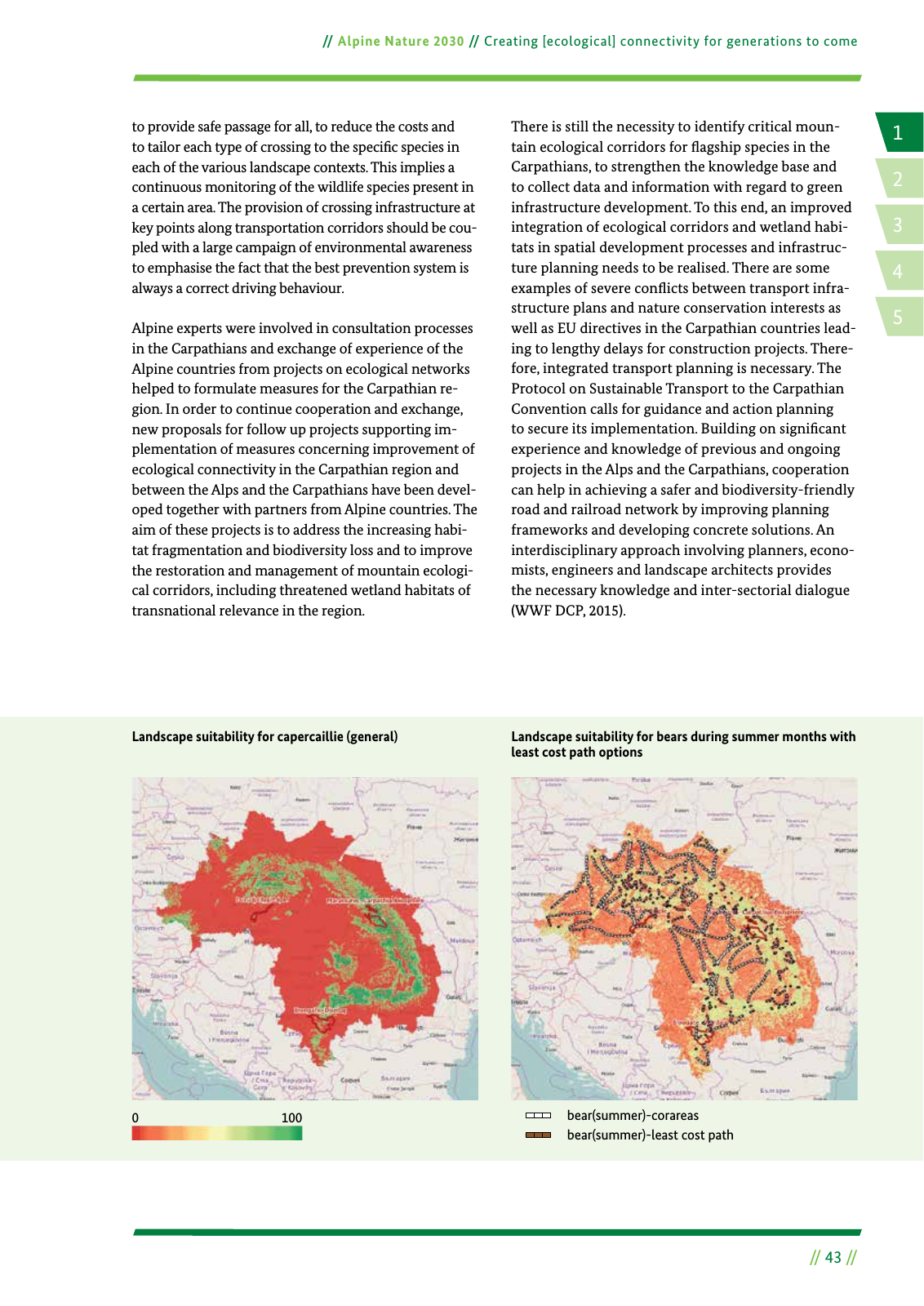14 2 5 3 43 Alpine Nature 2030 Creating ecological connectivity for generations to come to provide safe passage for all to reduce the costs and to tailor each type of crossing to the speci c species in each of the various landscape contexts This implies a continuous monitoring of the wildlife species present in a certain area The provision of crossing infrastructure at key points along transportation corridors should be cou pled with a large campaign of environmental awareness to emphasise the fact that the best prevention system is always a correct driving behaviour Alpine experts were involved in consultation processes in the Carpathians and exchange of experience of the Alpine countries from projects on ecological networks helped to formulate measures for the Carpathian re gion In order to continue cooperation and exchange new proposals for follow up projects supporting im plementation of measures concerning improvement of ecological connectivity in the Carpathian region and between the Alps and the Carpathians have been devel oped together with partners from Alpine countries The aim of these projects is to address the increasing habi tat fragmentation and biodiversity loss and to improve the restoration and management of mountain ecologi cal corridors including threatened wetland habitats of transnational relevance in the region There is still the necessity to identify critical moun tain ecological corridors for agship species in the Carpathians to strengthen the knowledge base and to collect data and information with regard to green infrastructure development To this end an improved integration of ecological corridors and wetland habi tats in spatial development processes and infrastruc ture planning needs to be realised There are some examples of severe con icts between transport infra structure plans and nature conservation interests as well as EU directives in the Carpathian countries lead ing to lengthy delays for construction projects There fore integrated transport planning is necessary The Protocol on Sustainable Transport to the Carpathian Convention calls for guidance and action planning to secure its implementation Building on signi cant experience and knowledge of previous and ongoing projects in the Alps and the Carpathians cooperation can help in achieving a safer and biodiversity friendly road and railroad network by improving planning frameworks and developing concrete solutions An interdisciplinary approach involving planners econo mists engineers and landscape architects provides the necessary knowledge and inter sectorial dialogue WWF DCP 2015 Landscape suitability for capercaillie general Landscape suitability for bears during summer months with least cost path options 0 100 bear summer corareas bear summer least cost path

Hinweis: Dies ist eine maschinenlesbare No-Flash Ansicht.
Klicken Sie hier um zur Online-Version zu gelangen.
Klicken Sie hier um zur Online-Version zu gelangen.